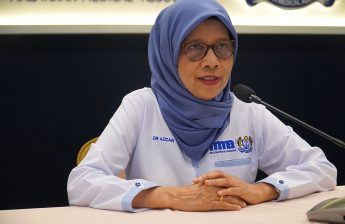The last two years of the Covid-19 pandemic has been unkind to all of us, but even worse for the junior doctors who confronted the virus as frontliners. Despite the risks, they have contributed to nursing society at large back to health.
During the several lockdowns when social distancing was imposed for safety, these doctors have been in close contact with Covid-19 patients, while being fully covered in hot and uncomfortable PPEs. They worked around the clock, without any breaks.
We have yet to appreciate the work of these exhausted doctors. On the contrary, we read about the deaths of two doctors from Penang General Hospital, allegedly triggered by bullying from senior doctors.
Inevitably, this toxic imbalance of power and alleged subjugation have manifested on social media as a “seniors vs. house officers” debate.
Research, studies, and heart-wrenching personal stories have told us that hospitals do have an entrenched and unchallenged hierarchy of specialists and consultants. Some do use gruelling methods to teach and train their juniors.
According to surveys by Malaysian Medical Association (MMA) and Doctors Only Bulletin Board System, up to 80 per cent of doctors have experienced bullying while serving in the public sector.
So let us not pretend that this does not happen.
Bullying has been occurring repeatedly over the decades, while both the victims and others have accepted this as normalised behaviour.
“No house officer has gone through his training without any bullying, not only by senior doctors, but even by matrons. It is like a rite of passage,” said a physician.
The bullying ranges from being shouted at to quit their jobs, being ridiculed, treated with hostility when approached, publicly criticised, and being given unreasonable deadlines on top of the usual workload.
Before we pin any labels on the senior doctors, let us address the elephant in the room — a cumulation of past government and political mistakes that have endorsed medical colleges, which lowered the entry standards for intakes, hence producing a lower quality of doctors.
Not only has merit deteriorated, English proficiency has also been compromised at the whims of politicians. This is despite teachings, textbooks, and most modern medical communication being mostly in English.
Hence, it is not about who is wrong in hospitals, but what has fundamentally gone wrong at medical schools, caused by political meddling.
Currently there are 21 medical colleges, 11 public universities, and 300 recognised foreign medical universities, resulting in an annual output of 5,000 medical graduates.
How were these students chosen? What is the quality of the curricula and who approved it? The calibre of each and every doctor will decide the quality of our health care system.
On the surface, Malaysia has achieved a 1-to-500 doctor to patient ratio. It is reported that this includes a glut of house officers, and that at least 25 per cent was retained because of their poor quality of work.
The house officer is usually the clerking doctor, blood collector, blood bank runner, and the emergency room frontliners. There will be emergency situations when the patient’s life may be in danger. A wrong word or a number could put a person’s life at risk.
Inevitably, during these high-tension moments, curt and abrasive language will be used by seniors managing the crisis, crossing the distinct line between training and bullying.
Studies also show demotivation, loss of confidence, anxiety and self-doubt, lower productivity, and the fear of a junior doctor to seek clarification which can affect patient treatment.
It is encouraging that the Ministry of Health, activists and previous Malaysian Medical Association (MMA) presidents are emphasising workplace bullying as an occupational hazard that should be addressed promptly.
Health Minister Khairy Jamaluddin is setting up a task force with policymakers, senior doctors, hospital management, and other experts for a collective approach to move forward.
There is no quick fix here, except to have an entry examination based purely on merit, and nothing else but merit alone, for medical graduates to qualify as house officers.
Unfortunately, past governments have misrepresented, misinterpreted and confused merit with racial prejudices. This should not happen again.
If house officers do a job well, they will have zero tolerance towards any covert or overt bullying. Meanwhile, senior doctors should also self-reflect on whether they are perpetuating a power hierarchy style as defined by their own experiences as house officers.
I believe no one should allow themselves to be bullied if they are confident that their work is unquestionably good.
The MMA has a national initiative, HelpDoc, that assures support and confidentiality when cases are reported. The Schomos House Officers’ Guidebook 2022 also has guidelines for junior doctors to address their bullying and harassment issues.
Most importantly, within the hospital, the Human Resources department should be more accessible to the juniors. The HR department should assess performances independently, without being partial to seniors’ opinions.
The medical fraternity is like a tapestry of humanity, quality, and precision. Every thread of this tapestry is part of the process for a patient’s recovery, and cannot be misaligned either by the ego of a senior doctor or the weakness of a junior.
- This is the personal opinion of the writer or publication and does not necessarily represent the views of CodeBlue.




